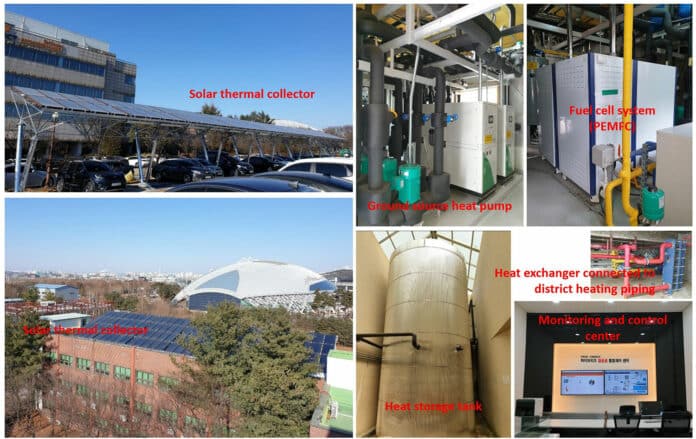Energy consumption areas such as manufacturing, buildings, transportation, and agriculture have recently received considerable attention because of the high rate of heat losses associated with them. The building sector consumes 20% of the total global energy, with an expected annual increase of 1.4% between 2012 and 2040.
Efforts are being made globally to reduce carbon emissions from urban areas and buildings through the provision of renewable energy and the construction of zero-energy buildings.
Researchers at the Department of Building Energy Research of the Korea Institute of Civil Engineering and Building Technology (KICT, President Kim Byung-suk) have developed a bi-directional heat trade system that utilizes excess heat from renewable energy, including solar heat in an effort to achieve carbon neutrality in buildings.
The system could help buildings trade the excess heat bi-directionally via heating pipes after self-consumption in areas where there are high concentrations of buildings.
Researchers configured a network of heating pipes for the three buildings of the KICT located in Ilsan, Korea, and used an array of solar and geothermal heat and fuel cells as the sources of heat. Two 994 square meter solar thermal collectors were installed in the outdoor parking lot and on the rooftop, and a heat pump for a 310kWth geothermal heat source, a 10kWp fuel-cell system, and two thermal storage facilities of 40m3 and 10m3 capacities were built.
The simulation and the proof of concept proved that the twin pipe is effective in the network of low-temperature heat pipes with about 10% heat loss. When there is enough sunlight, hot water for heating is supplied by solar heat to the second pipe of distinct heating through a heat exchanger. When there is insufficient sunlight, hot water can be supplied through the heat pump system of the geothermal source and the fuel-cell system.
The bi-directional heat trade system can be controlled both manually and automatically at the integrated control center.
Renewable heat energy applied to a building is usually for self-consumption. In a small-scale district heating system, supply and demand facilities are separated, and heat is supplied unidirectionally. In this study, the bi-directional heat trade system was implemented, improving the utilization rate of renewable heat source facilities and system efficiency.
“The system has the potential to increase the use of renewable heat energy in cities and buildings, which will ultimately reduce their carbon emissions,” said Yongki Kim, the head of the research team.
Journal reference:
- Muhammad Usman and Yong Ki Kim. Pipe Insulation Evaluation for Low-Temperature District Heating Implementation in South Korea. Frontiers in Energy Research, 2022; DOI: 10.3389/fenrg.2021.793557
